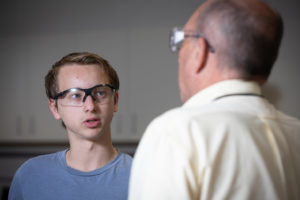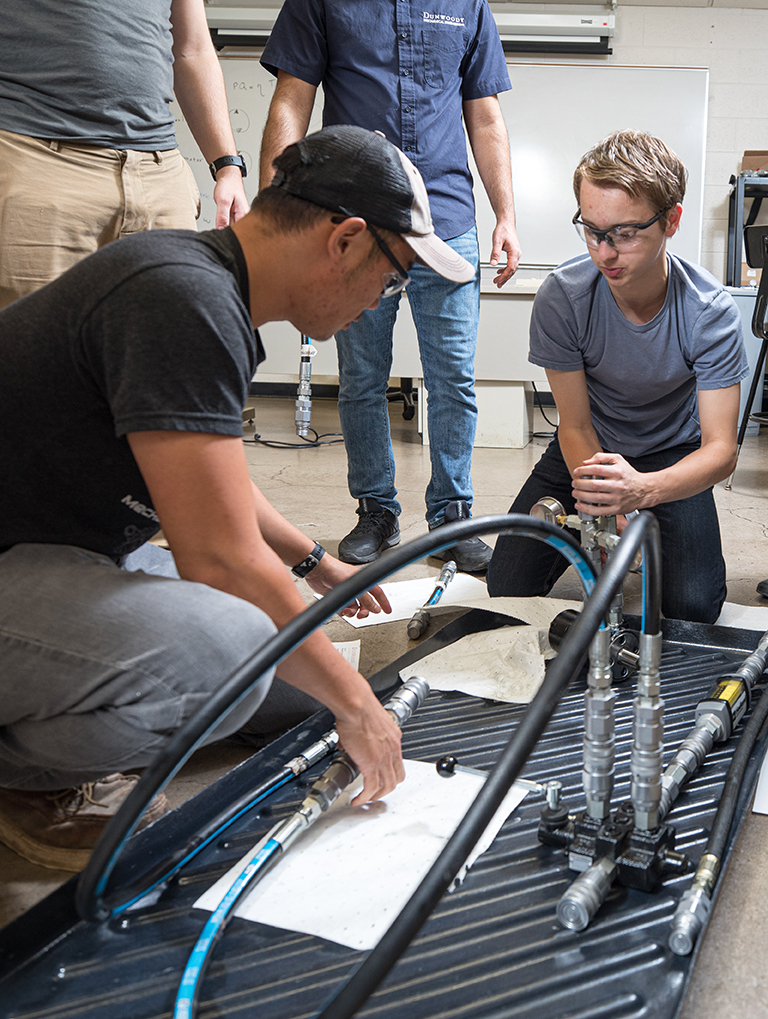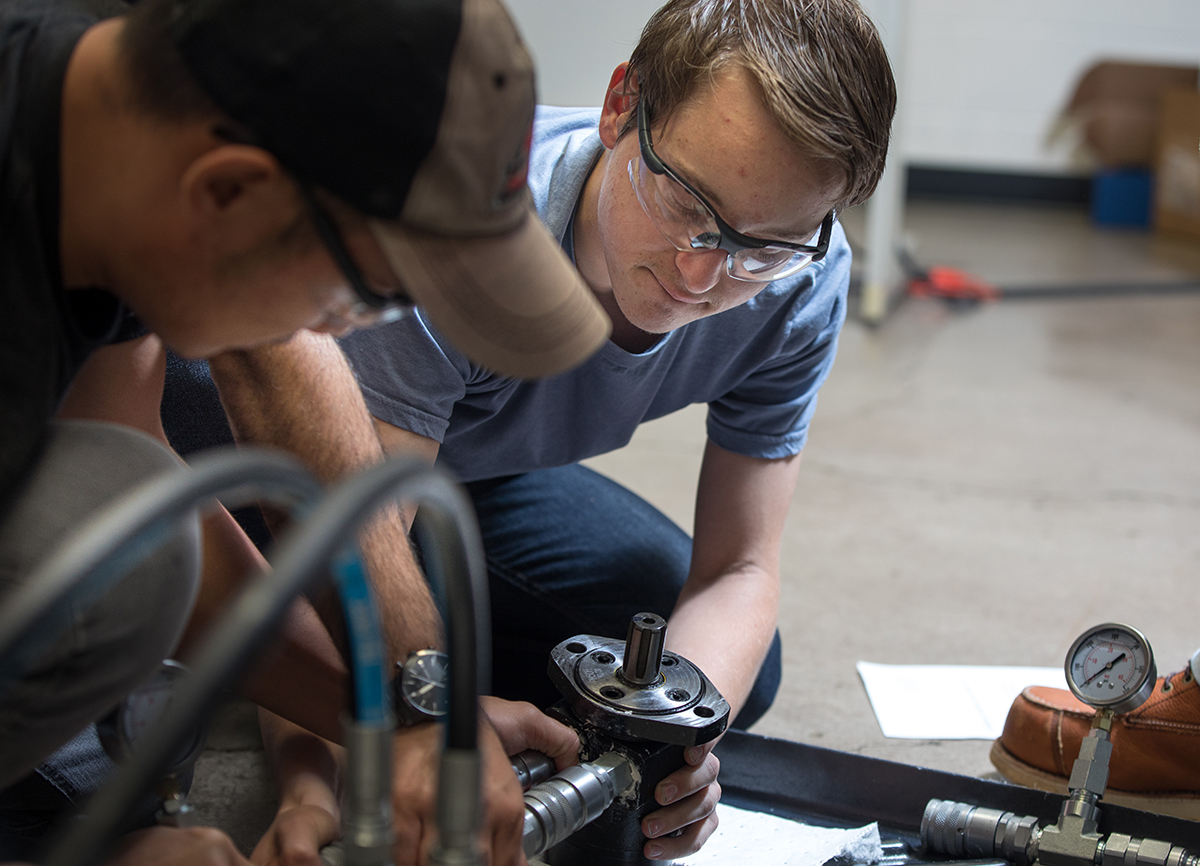Senior Mechanical Engineering student Benjamin Larsen has many different skills and interests. That’s due, in part, to his childhood in Florida where he was always tinkering with things in his family’s garage or in the woods near his house. But it also reflects growing up in a family with parents and siblings who also have an entrepreneurial spirit and are curious about how the world works.

When he was 10, Larsen moved with his family to Minnesota (where his parents were originally from) and he continued to tinker and began to have ideas for projects he wanted to create. His curiosity was aided by being homeschooled and taking PSEO classes (Postsecondary Enrollment Options) at Anoka Technical College, Normandale, and University of Northwestern. His intention had been to take a year off after graduating from high school, but Dunwoody came up in conversations with family and friends about what he wanted to do so he decided to check out the website. There he saw information about additive manufacturing (3D printing) and decided to visit campus. Larsen ended up enrolling in the Engineering Drafting & Design (MDES) program and then switched to Mechanical Engineering when that degree became available the fall of 2015.

“I knew right away that I wanted to do more than what MDES was offering,” Larsen said. “I wanted to get into data analysis, but also maintain the design and hands-on stuff that MDES offered.”
He also thought Mechanical Engineering would be a good way to add to the portfolio of skills in the family — both of his brothers have a diverse range of skills and interests, including programming, engineering, and architecture.
“I wasn’t sure what to expect from a private technical school,” Larsen said. “Very quickly I noticed the small classes, and the fact that a lot of people have jobs and families. There’s a diverse range of ages and backgrounds. I enjoyed it and thought it was very interesting.”
It also gave him a more realistic perspective on what success looks like: “Work ethic is now a lot more important to me than intellect,” he said.
Engineering & Data
As he got further into the Mechanical Engineering program, Larsen discovered that his original instinct about data analysis was correct. In particular, he enjoyed working on a project for his Geometric Dimension & Tolerancing & Measurements class.
“We had to come up with a device that would record data and perform uncertainty analysis. And it had to be as automated as possible,” Larsen said.
He and a classmate built a Computer Measuring Machine. They designed and 3D printed the components to make the measuring device itself. An Arduino microcontroller captured the measurements and fed them to a Raspberry Pi computer, which pushed the data up to a network.
After making sure the data flowed and converted correctly, Larsen then pulled it down to his laptop and used a Python application to plot the data points.
The end result was a device, or rather a system of connected devices, that allowed the group to probe several points on a surface and then graph the points to see how flat the surface being measured actually was. They used a surface plate in the College’s Metrology Lab as a comparison and generated heat maps for other surfaces — tables, carpet, pieces of plywood — to show their variability.
Real-World Experience
The College’s project-centered curriculum works well for Larsen. But he has also not been shy about using his skills beyond Dunwoody’s walls.
Going into his senior year, Larsen has already completed internships with Design Ready Controls, and Graco. He has also done contract design work using the SolidWorks skills he learned in his year as an MDES student and currently has a contract programming magnetic fields for different mechanisms, which he devotes part of his weekends to.
This is in addition to continuing an internship at Boston Scientific where he started out as a tech intern for the batteries manufacturing department, troubleshooting and maintaining equipment. Larsen has now moved more into engineering and is doing design work and prototyping. One of his current projects is to redesign a welder. He’s completed the testing and is now on the validation phase. To speed the project up, Larsen did some CNC training with Productivity Inc. so he can machine the parts himself.
What’s Next
After he graduates next May — along with the other students in the inaugural Mechanical Engineering class — Larsen hopes to land a full-time position with Boston Scientific or perhaps with the company he’s doing the magnetic field programming for.
He’s also considering working part-time on a start-up company with his brother (who is not only a programmer, but does botany) that focuses on improving automation technology for food production.
Larsen has a long-term motive for that option: “I want to get really good at automating food production so I can use that to produce food in space, whether that’s on satellites or planets,” he said. “Space companies are popping up and in the next 5 to 10 years food production in space is going to become more important. The technology is there — it just needs to be developed and tested.”
The first class of Dunwoody’s Bachelor of Science in Mechanical Engineering program will graduate in May 2020.
